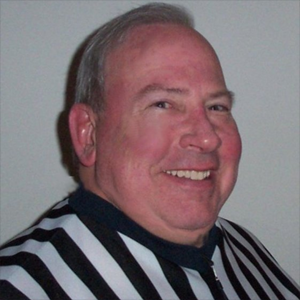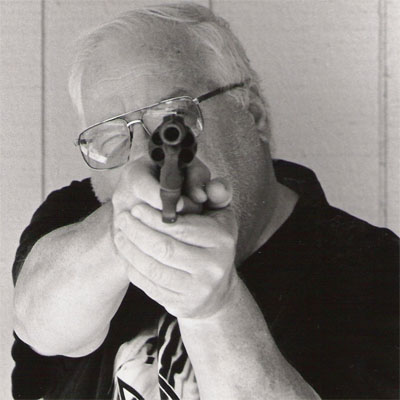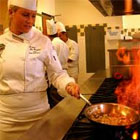
Rndballref
20 Years Experience
Chicago, IL
Male, 60
For twenty years I officiated high school, AAU and park district basketball games, retiring recently. For a few officiating is the focus of their occupation, while for most working as an umpire or basketball referee is an avocation. I started ref'ing to earn beer money during college, but it became a great way to stay connected to the best sports game in the universe. As a spinoff, I wrote a sports-thriller novel loosely based on my referee experiences titled, Advantage Disadvantage
Yes, in a tie game I called travelling on a last second shot which went in. I sent the game into overtime and the team that travelled lost the game.
If the ball is live, then any foul can be called. If the ball is dead, the only foul which can be called is a technical.
On a throw in, the ball is live (even though the clock is not running) when it is at the disposal of throw in player ... in other words when the referee hands or bounces the ball to the player. So, yes a common foul can be called before the clock runs.
It is not traveling if a hand touches the floor as long as your feet have not violated the traveling rules. Any other part of your body (beside hands and feet) touching the floor while in control of the ball constitutes traveling.
As you describe it, it is traveling. If you catch the ball with both feet on the ground, when you lift one of the feet the other becomes the pivot. But if a player hops, neither foot is a pivot and it is traveling.
Correctional Officer
 Why does gang formation and racial segregation happen so much in prisons?
Why does gang formation and racial segregation happen so much in prisons?
Flight Attendant
 How do you handle belligerent passengers?
How do you handle belligerent passengers?
Chef
 Is it true that the "specials" are usually the stuff that's been sitting around awhile?
Is it true that the "specials" are usually the stuff that's been sitting around awhile?
No. After returning to the floor the player is no longer in the act of shooting. It should be a non-shooting common foul.
Players should play until a whistle is blown. In your scenario the refs made two mistakes: 1) if there is not an advantage by the team in possession when the buzzer sounded, they should blow the whistle and find out what the timekeeper wanted, and 2) once they let the game continue then they should count all activities until the whistle.
Yes, the referees are in charge of designating who is entitled to shoot bonus or shooting fouls. Coaches designate who will shoot technicals.
As a best practice, when the foul calling official calls the foul, the nearest other official should come in and point to the shooter and verbalize, "I got the shooter". This is better than the other official saying, " the shooter is number XX" because to reporting official can get tangled up with the shooter and fouler's numbers.
-OR-
 Login with Facebook
Login with Facebook (max 20 characters - letters, numbers, and underscores only. Note that your username is private, and you have the option to choose an alias when asking questions or hosting a Q&A.)
(A valid e-mail address is required. Your e-mail will not be shared with anyone.)
(min 5 characters)
By checking this box, you acknowledge that you have read and agree to Jobstr.com’s Terms and Privacy Policy.
-OR-
 Register with Facebook
Register with Facebook(Don't worry: you'll be able to choose an alias when asking questions or hosting a Q&A.)